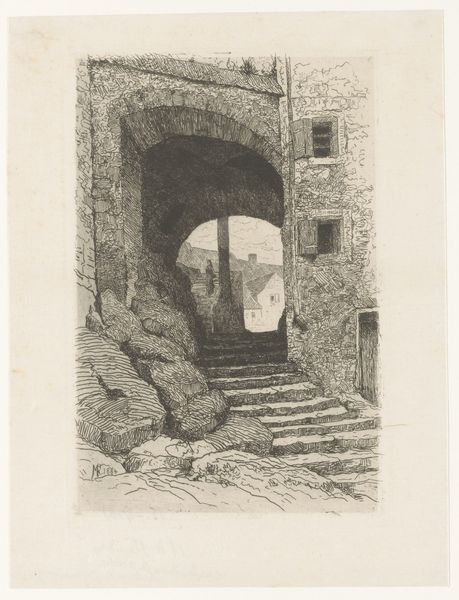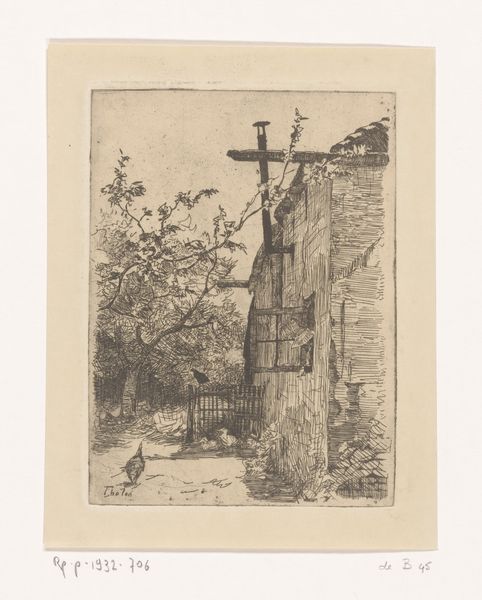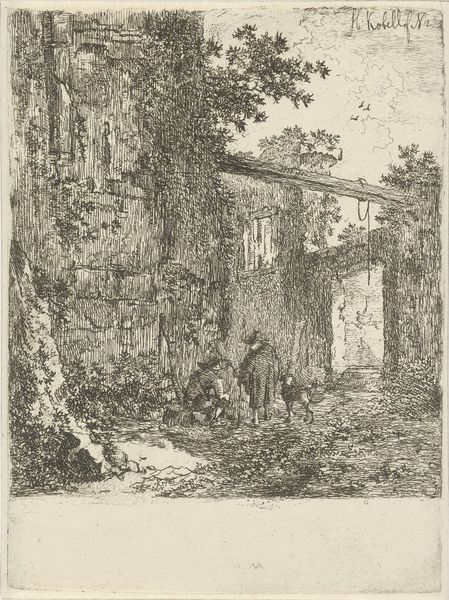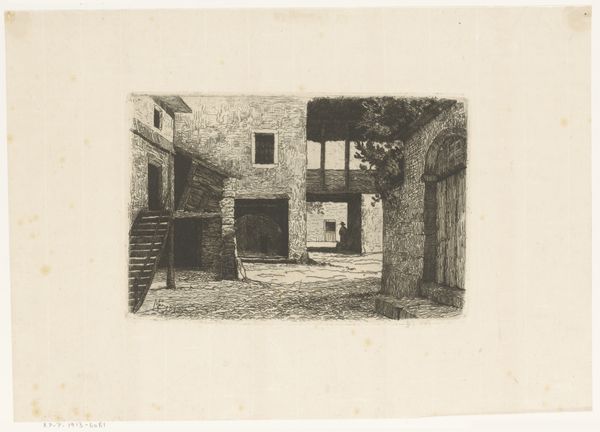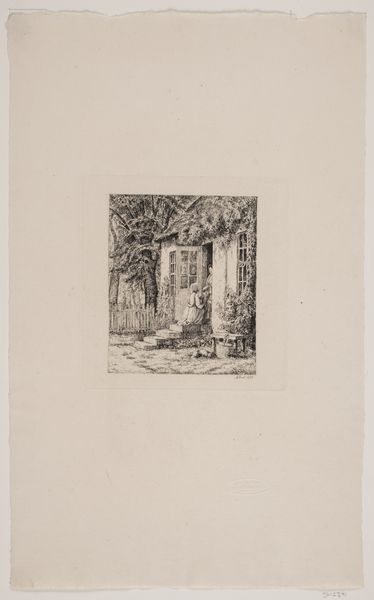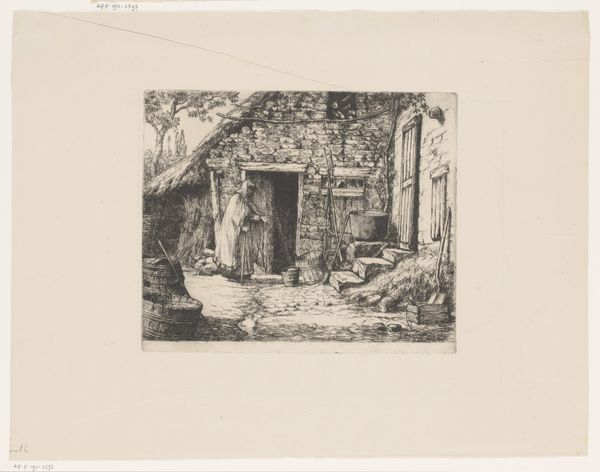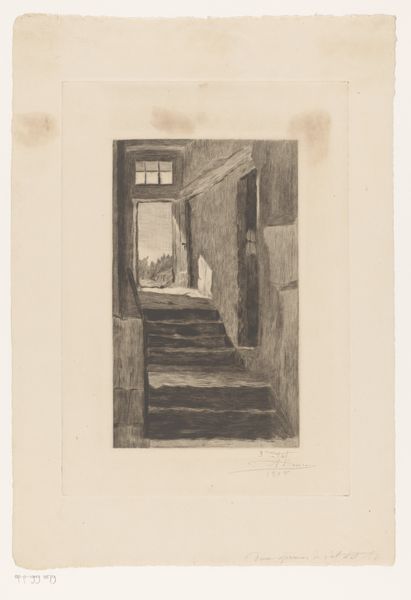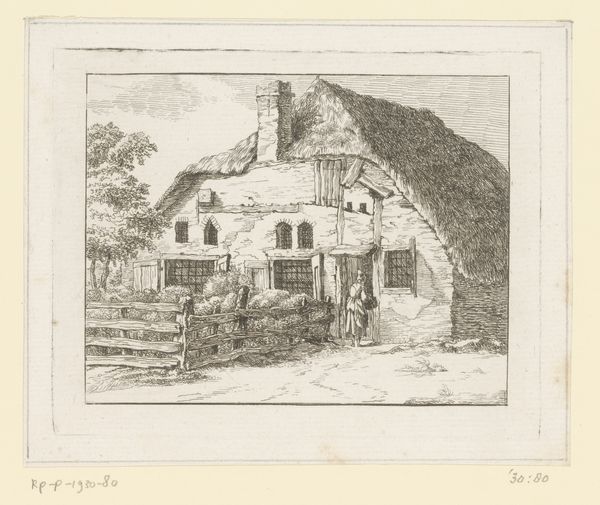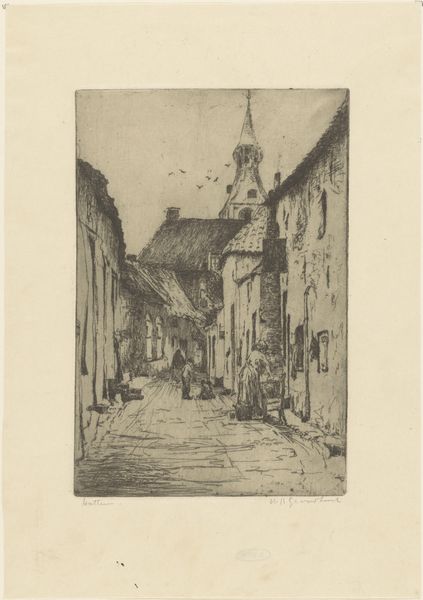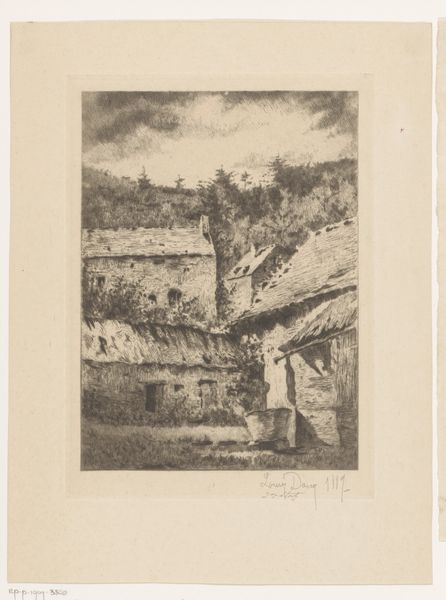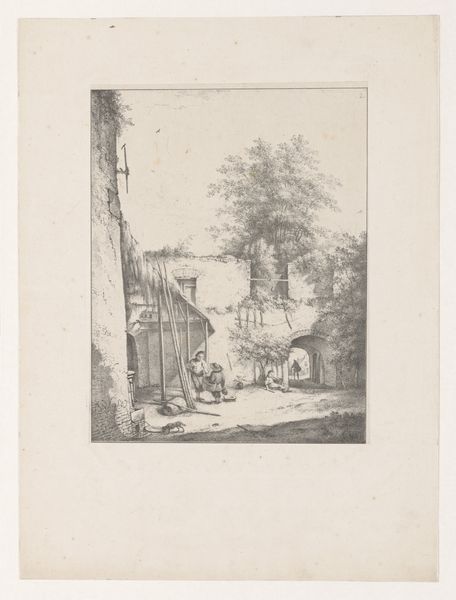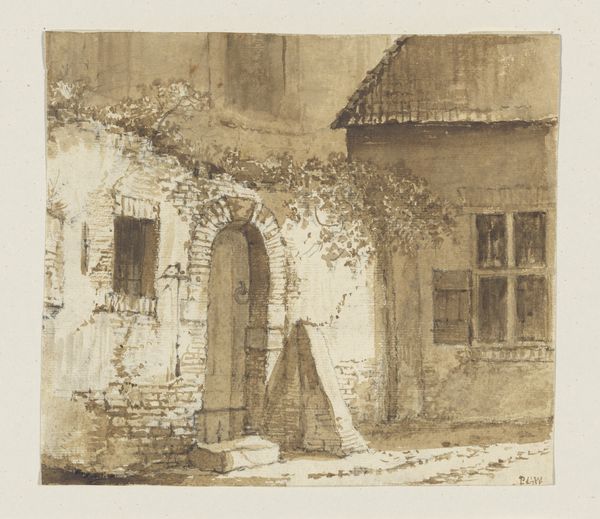
drawing, print, etching, architecture
#
pencil drawn
#
drawing
# print
#
etching
#
old engraving style
#
landscape
#
architecture
#
realism
Dimensions: height 279 mm, width 211 mm
Copyright: Rijks Museum: Open Domain
Editor: So, here we have "Chalet met trap," or "Chalet with Stairs," created around 1880 using etching and printmaking. It gives me a strong sense of rustic isolation, the kind of place tucked away from the rapid changes of the Industrial Revolution. How do you interpret this work, especially considering the period it was made in? Curator: The deliberate focus on rural architecture during a time of immense urban expansion speaks volumes. Etchings like this become crucial documents. We see the charm of pre-industrial life being not merely represented, but almost archived through art. Consider the identity politics at play: who gets to define "progress" and whose histories are being overwritten? Editor: That's a fascinating point. It's easy to see it as just a quaint building, but the act of choosing this subject in that era elevates it to a statement. Does the architectural style itself tell us anything about the social context? Curator: Absolutely. The chalet, with its functional design and visible construction, represents a vernacular architecture rooted in the needs of the community. By portraying it, the artist subtly resists the homogenizing forces of industrialization, celebrating the value of regional and class identity. Look at the prominent stairway—a feature highlighting accessibility but also exposing the different levels inherent in the society that occupies it. How do you feel that plays out visually? Editor: The stairs being so prominent makes me think about access and exclusion, and about labor itself. Perhaps, in the romanticizing of this architecture, some of those difficult realities are being glossed over, even as others are revealed? Curator: Exactly. And by engaging critically with the image, we expose that tension. What at first appears to be an innocent landscape transforms into a contested space reflecting complex power dynamics of its time – and perhaps, of our own. Editor: This has really opened my eyes. I am grateful to see how historical context can dramatically shift our understanding of art. Curator: Indeed, that intersection is key. Keep asking those critical questions!
Comments
No comments
Be the first to comment and join the conversation on the ultimate creative platform.
